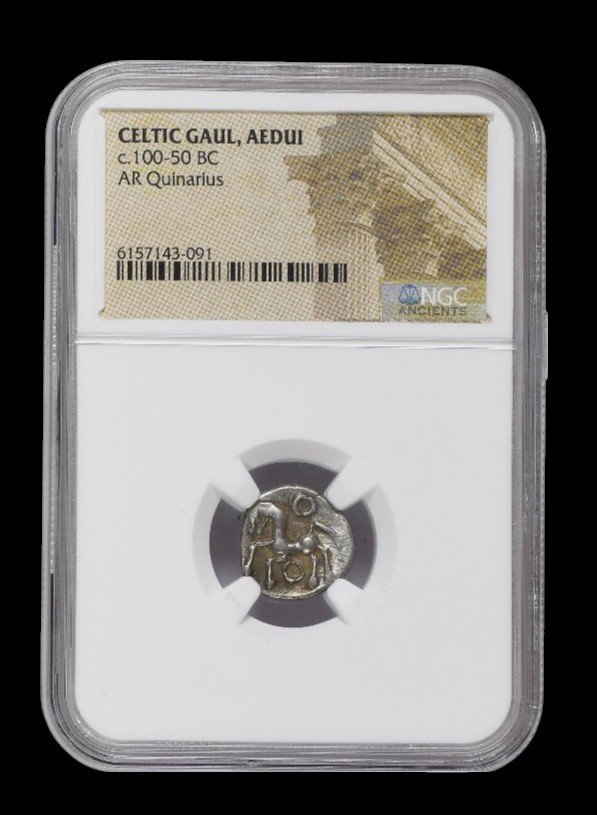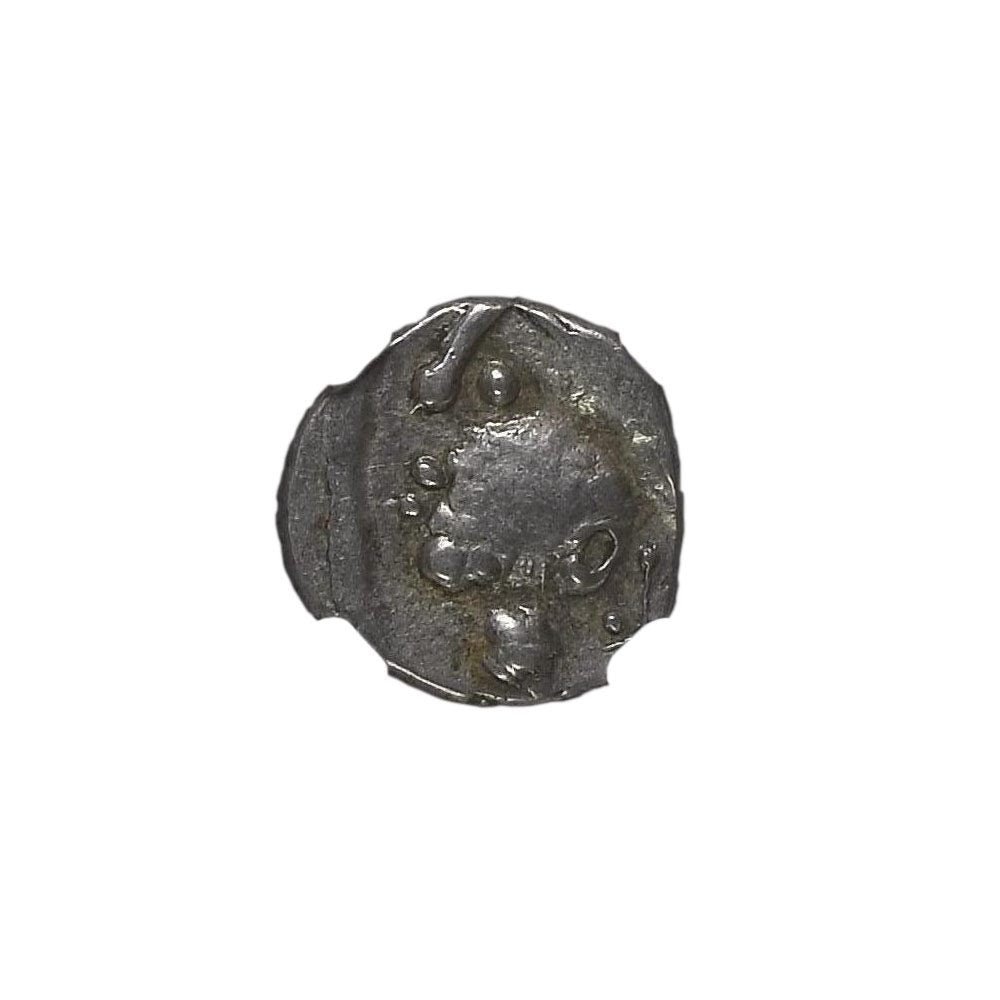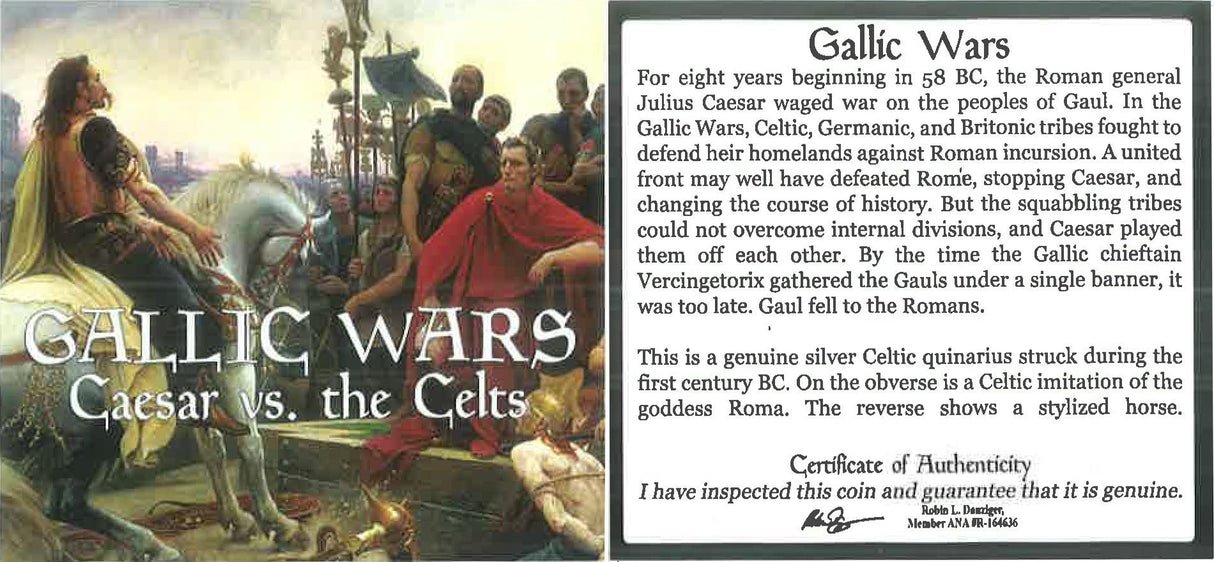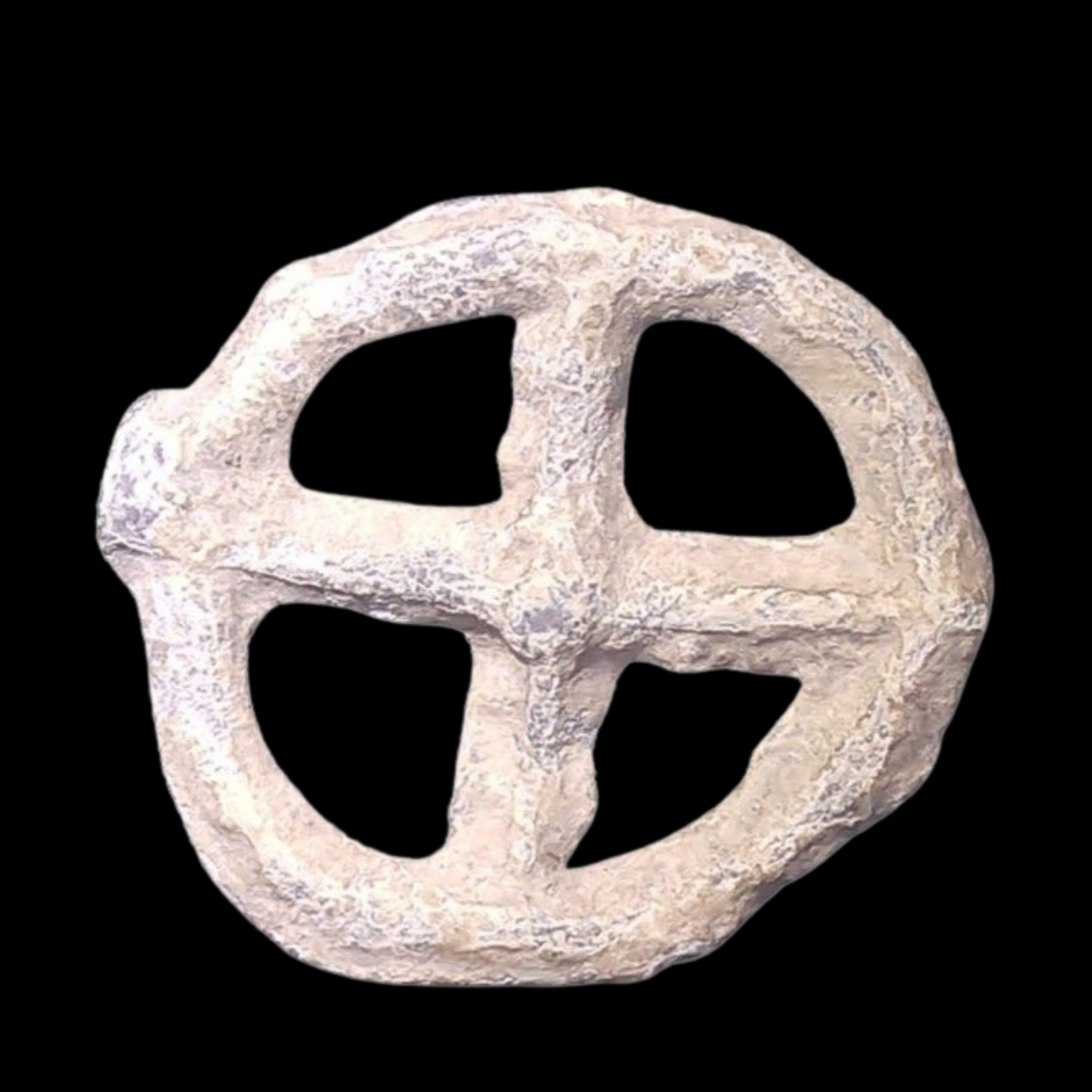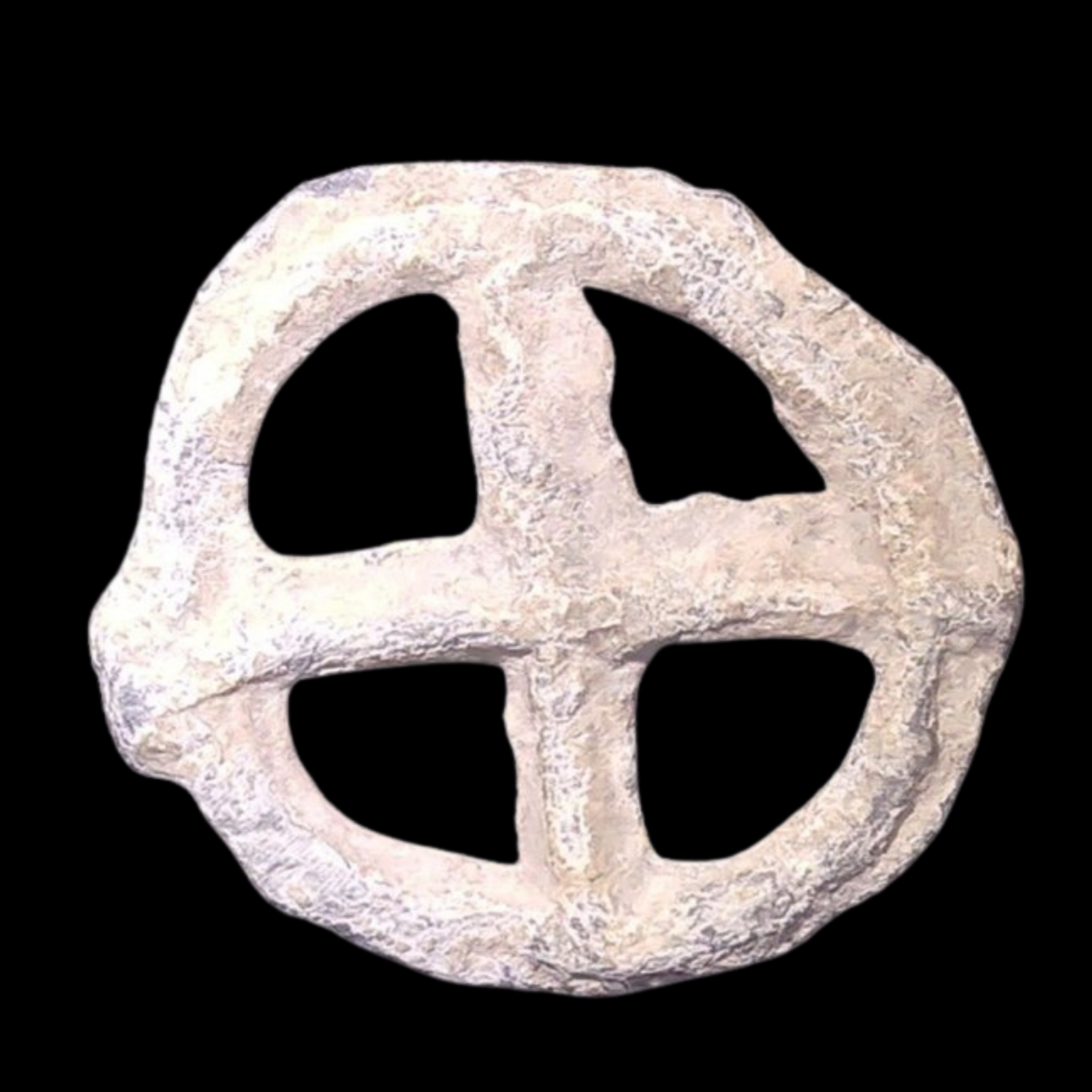 Image 1 of 2
Image 1 of 2

 Image 2 of 2
Image 2 of 2



Ancient Silver Unit from Celtic Britain: Iceni Tribe "Norfolk God" Coin (about 2,100 years ago)
This small silver coin was struck by the Iceni tribe in what is now Norfolk, England, during the 1st century BC. The Iceni were a powerful Celtic tribe who later became famous for their queen Boudica's revolt against Rome in AD 60-61. This coin predates that uprising by about a century and represents the sophisticated pre-Roman Celtic monetary system of ancient Britain.
Coin Description:
Front side:
Profile of a male head facing right with distinctive Celtic styling
Oval-shaped eye and prominent moustache
Hair depicted as short dashes
Crescents positioned behind the head, each with a pellet at the end
Corn ear symbol behind the head
Back side:
Horse facing right with decorative cabled mane
Lozenge (diamond shape) positioned below the horse
Simple but elegant Celtic artistic style
Technical Details:
Material composition: Silver
Denomination: Unit, 13mm diameter, 1.07g weight
Catalog/reference numbers: ABC 1567, Spink 434
Certification/grade: Not specified
Date/period of minting: 1st century BC, struck by the Iceni tribe in Norfolk region
Historical Significance Paragraph: This coin was once thought to depict the famous warrior queen Boudica, but modern scholarship has shown it was actually made about 100 years before her time. Instead, it represents the "Norfolk God" type and shows how the Iceni had developed their own sophisticated coinage system long before Roman conquest. The corn ear symbol reflects the agricultural wealth of East Anglia, while the horse was a common Celtic symbol of power and nobility. These coins circulated as everyday currency in pre-Roman Britain and demonstrate the complex tribal societies that existed before Julius Caesar's invasions.
This small silver coin was struck by the Iceni tribe in what is now Norfolk, England, during the 1st century BC. The Iceni were a powerful Celtic tribe who later became famous for their queen Boudica's revolt against Rome in AD 60-61. This coin predates that uprising by about a century and represents the sophisticated pre-Roman Celtic monetary system of ancient Britain.
Coin Description:
Front side:
Profile of a male head facing right with distinctive Celtic styling
Oval-shaped eye and prominent moustache
Hair depicted as short dashes
Crescents positioned behind the head, each with a pellet at the end
Corn ear symbol behind the head
Back side:
Horse facing right with decorative cabled mane
Lozenge (diamond shape) positioned below the horse
Simple but elegant Celtic artistic style
Technical Details:
Material composition: Silver
Denomination: Unit, 13mm diameter, 1.07g weight
Catalog/reference numbers: ABC 1567, Spink 434
Certification/grade: Not specified
Date/period of minting: 1st century BC, struck by the Iceni tribe in Norfolk region
Historical Significance Paragraph: This coin was once thought to depict the famous warrior queen Boudica, but modern scholarship has shown it was actually made about 100 years before her time. Instead, it represents the "Norfolk God" type and shows how the Iceni had developed their own sophisticated coinage system long before Roman conquest. The corn ear symbol reflects the agricultural wealth of East Anglia, while the horse was a common Celtic symbol of power and nobility. These coins circulated as everyday currency in pre-Roman Britain and demonstrate the complex tribal societies that existed before Julius Caesar's invasions.


